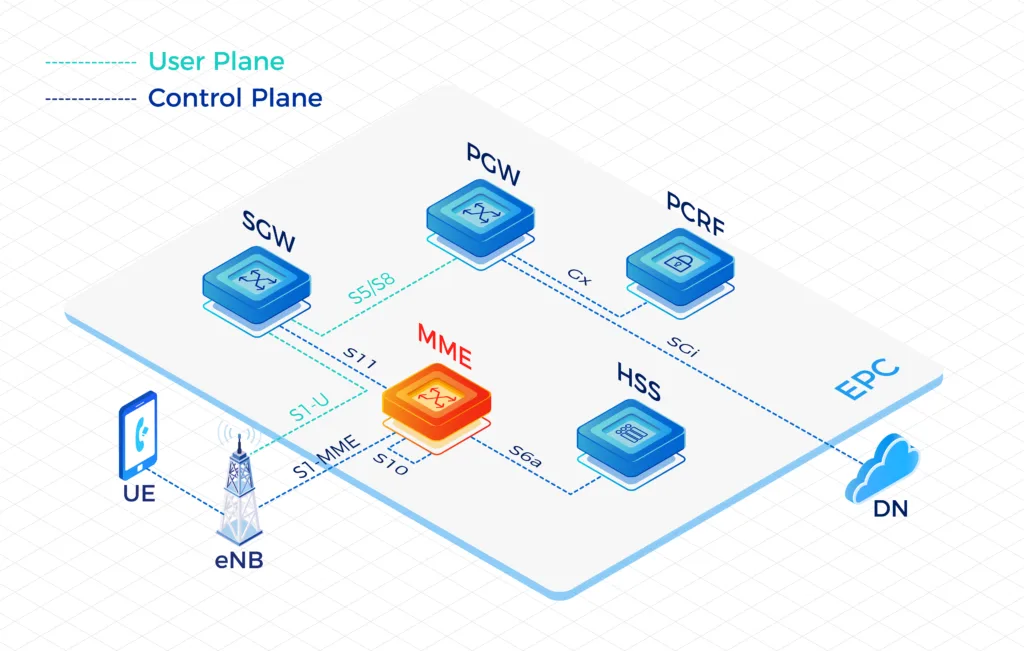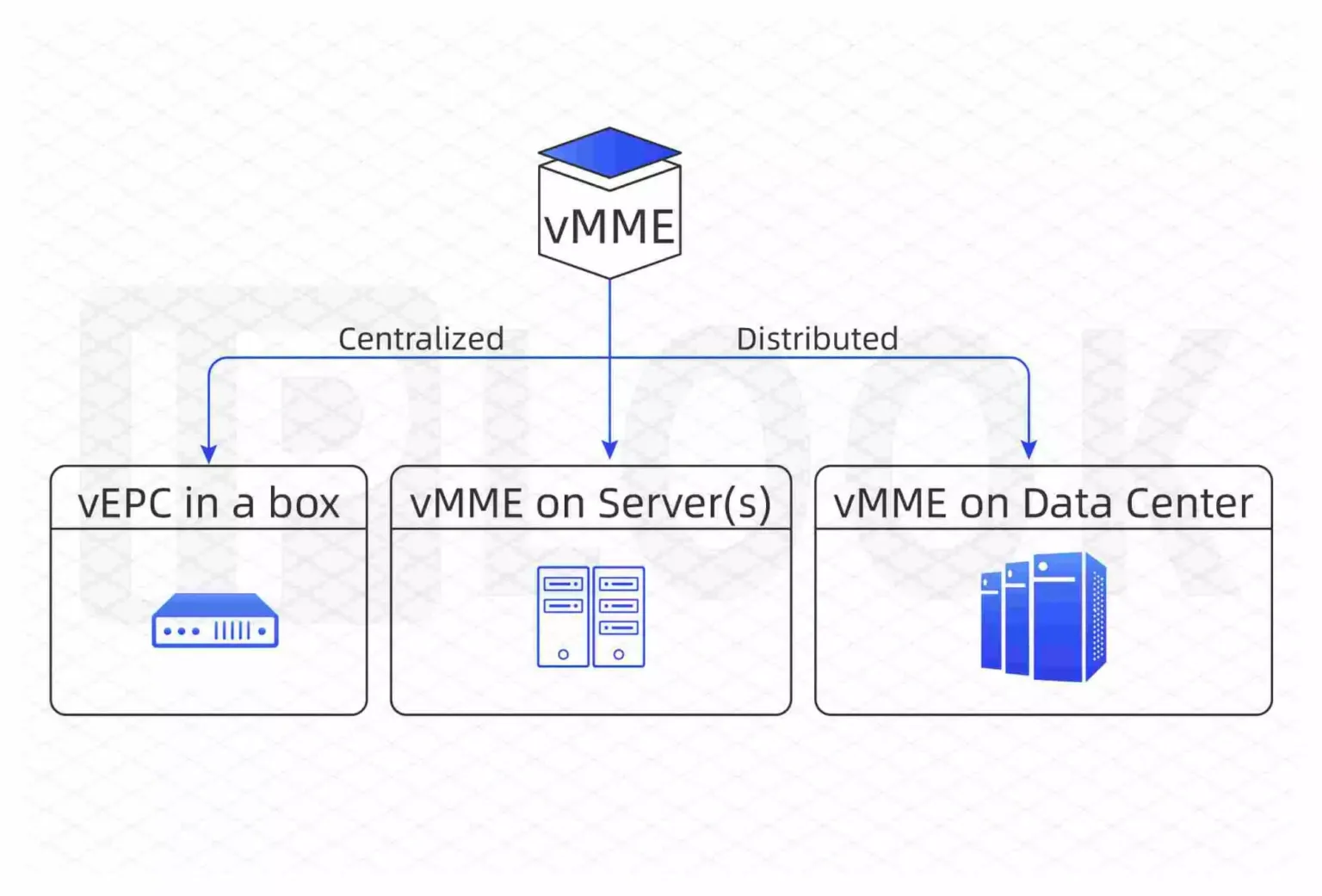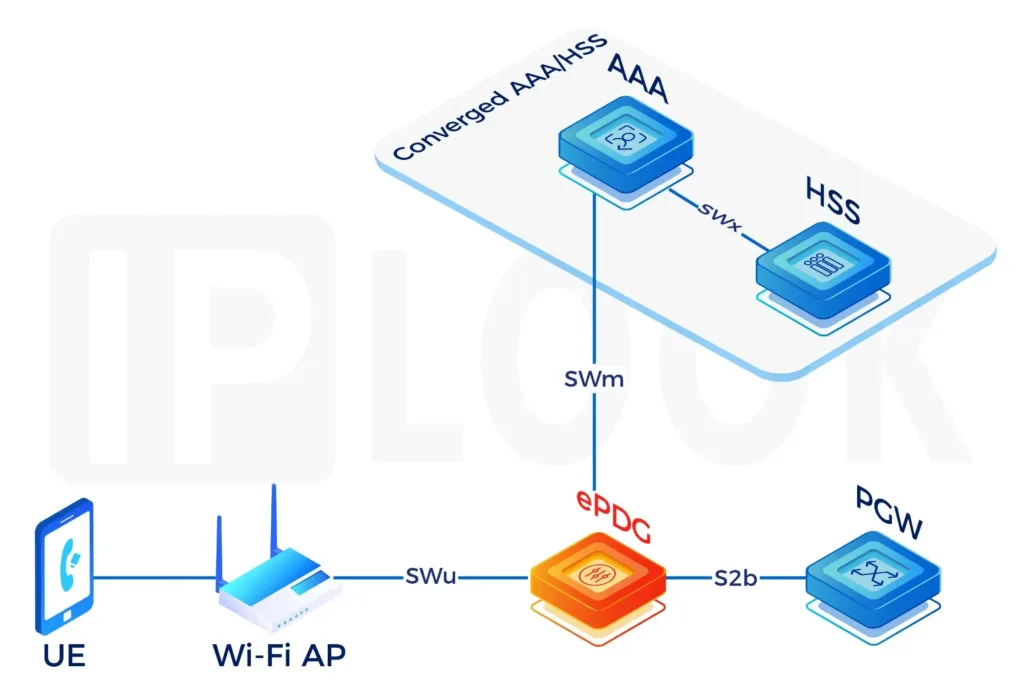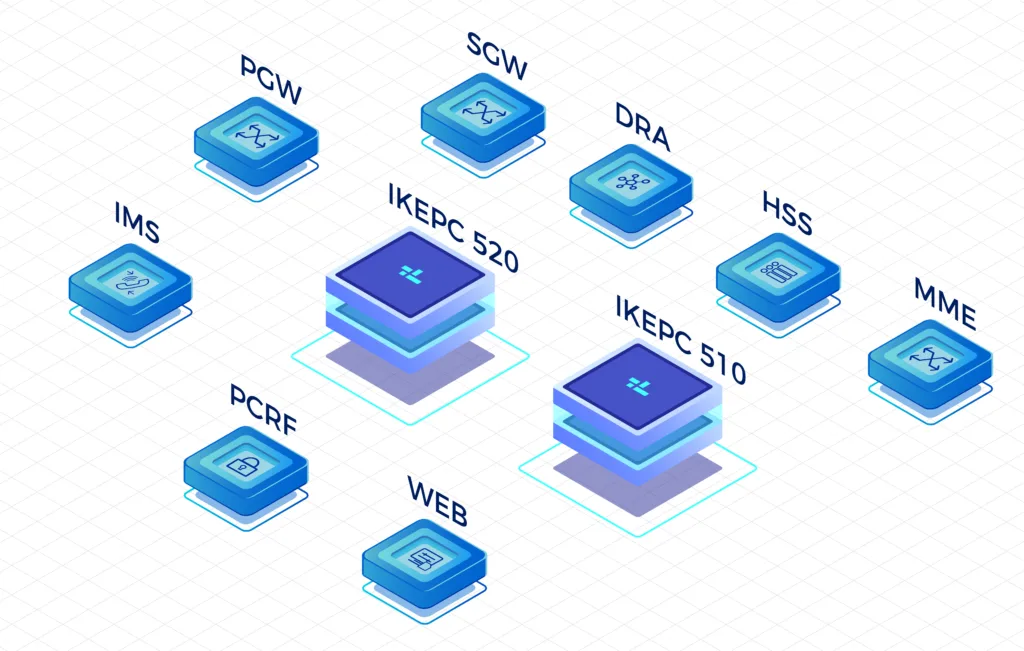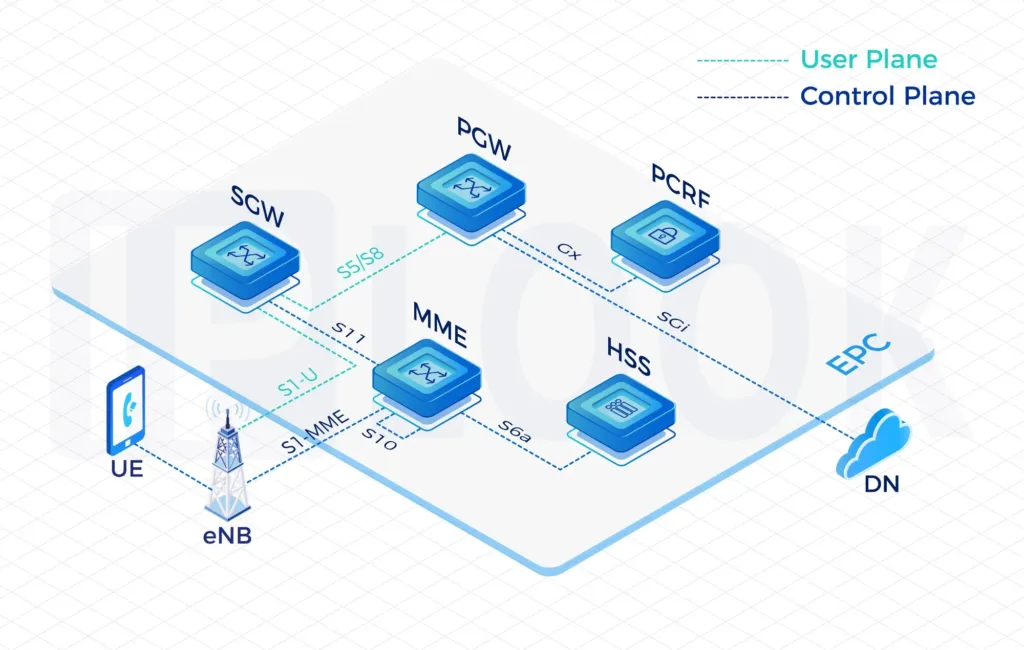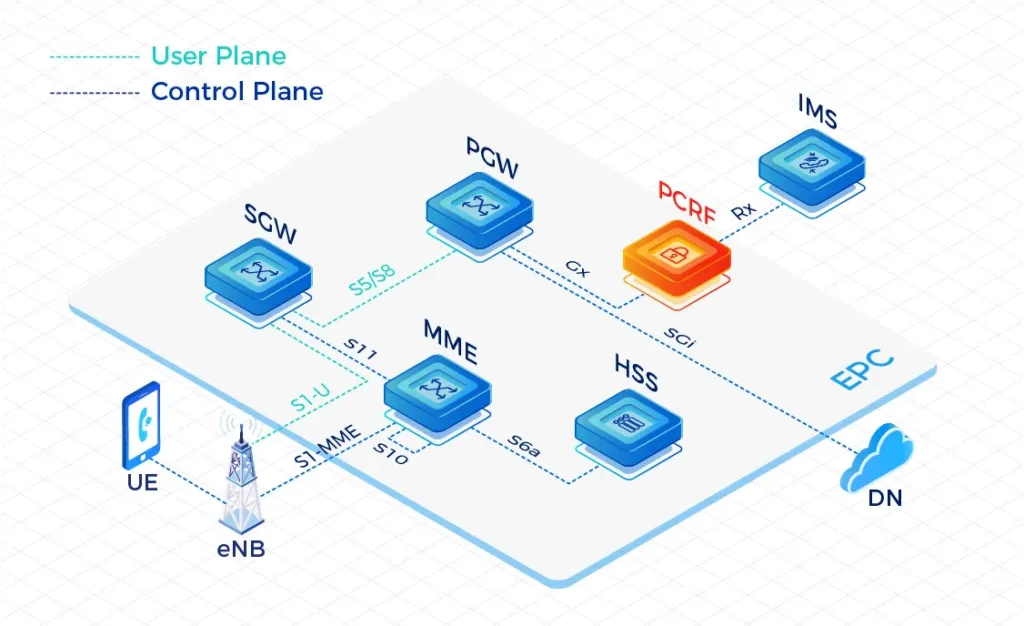Our High-Performing Core Network
Fully virtualizable on VMware, K8S, Docker and OpenStack containers
Mobility Management Entity(MME)
Mobility Management Entity(MME) is a key component of the standards-defined Evolved Pack Core (EPC) for LTE. It provides mobility session management for the LTE network and supports subscriber authentication, roaming and handovers to other networks.
Key Benefits

Up to 500 eNodeBs per instance

From 500 to 10M Subscribers

Support redundancy Deployment

NFV Deployment on COTS and Cloud
IPLOOK's Virtualized MME Fully standards-compliant MME in service in many operator networks around the globe
- The IPLOOK’s vMME is a fully standards-compliant core network product and has been integrated with the hardware and software of all telecom suppliers. It is the control plane node of EPC and deals with the signaling plane and completes the authentication with HSS.
- Our Carrier Grade MME adopts COTS server as the platform. The MME function can be NFV element and deployed in the data center environment. The MME application can also be directly deployed in a server to make full use of the hardware capability.
Features
Access Control
- Security
- Authentication
- GUTI allocation function
- User equipment identification function
- AS security context distributed function
- Confidentiality and integrity protection of the NAS signaling
- 3G security parameters and EPC security context mapping function
- Admission control
- On the capacity of system
- On the CPU and Memory resource consumption
Mobility Management Functions
- TAU
- Attach
- Detach
- Purge UE
- Handover
- State model
- ODB function
- Tracking area update
- Multi-PDN connection
- Access Restriction function
- Tracking area management
- Paging and service request
Roaming Management
Support CSFB function
5GS interworking
- EPS bearer activation
- UE AMBR management
- EPS bearer deactivation
- EPS bearer modification
Control selection of NE for the UE
- PDN GW selection
- Serving GW selection
- MME selection function
- SGSN selection function
Interfaces comply to 3GPP R14
- S13: Between EIR and MME
- S10: Connect the MME Pool
- S6a: Between MME and HSS
- S3/Gn: Between MME and SGSN
- S1-MME: Between eNodeB and MME
- S11: Between MME and SGW; transmit signal of Control Plate
- SGi: Between MME and MSC; handling the CSFB process
Network management function
- Overload control
- MME Pool function with Load balancing between MMEs

